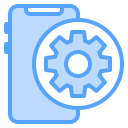Consistent UX Without Losing Native Polish
Define tokens, spacing, and component guidelines once, then implement consistently across platforms. This builds trust with users and speeds onboarding for new teammates. Want a starter checklist for cross-platform design systems? Comment “design” and we’ll follow up with resources.
Consistent UX Without Losing Native Polish
Cross-platform doesn’t mean identical. It means consistent where it counts and native where it delights. Use platform-aware navigation, gestures, and typography to match user expectations while keeping a cohesive brand. Share your favorite adaptive UI example to inspire others.









